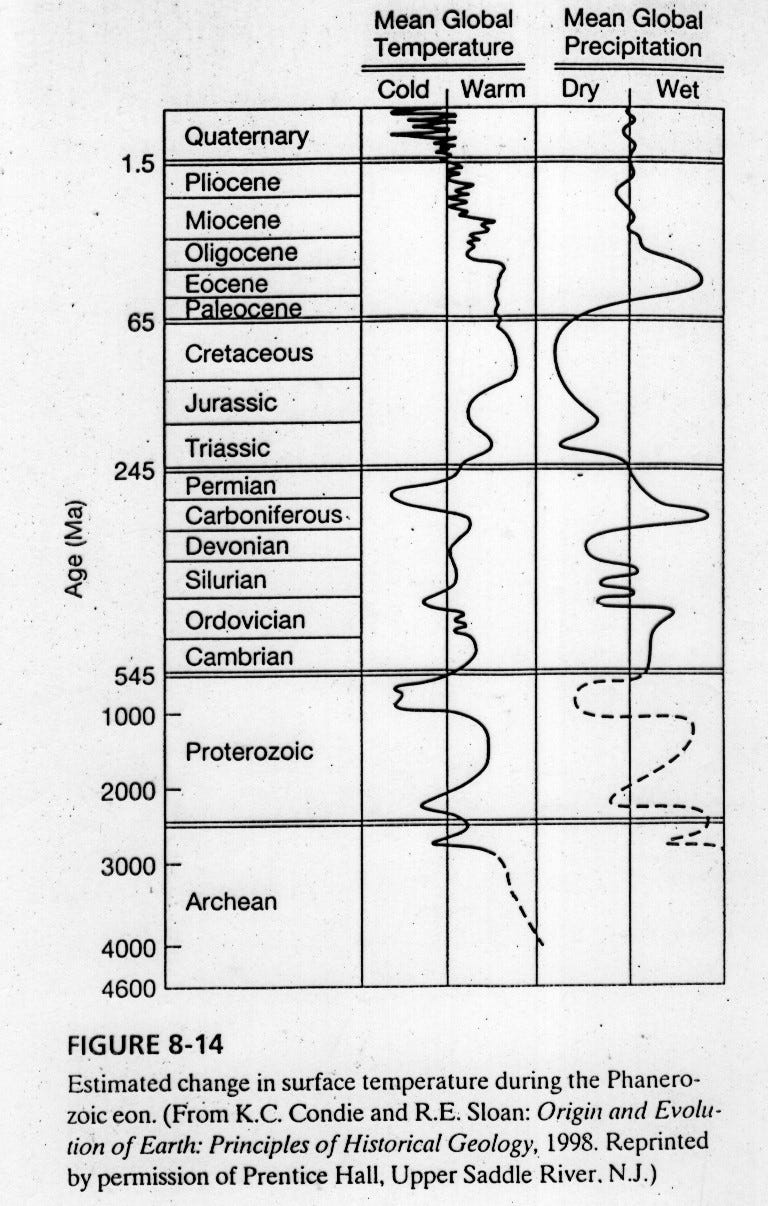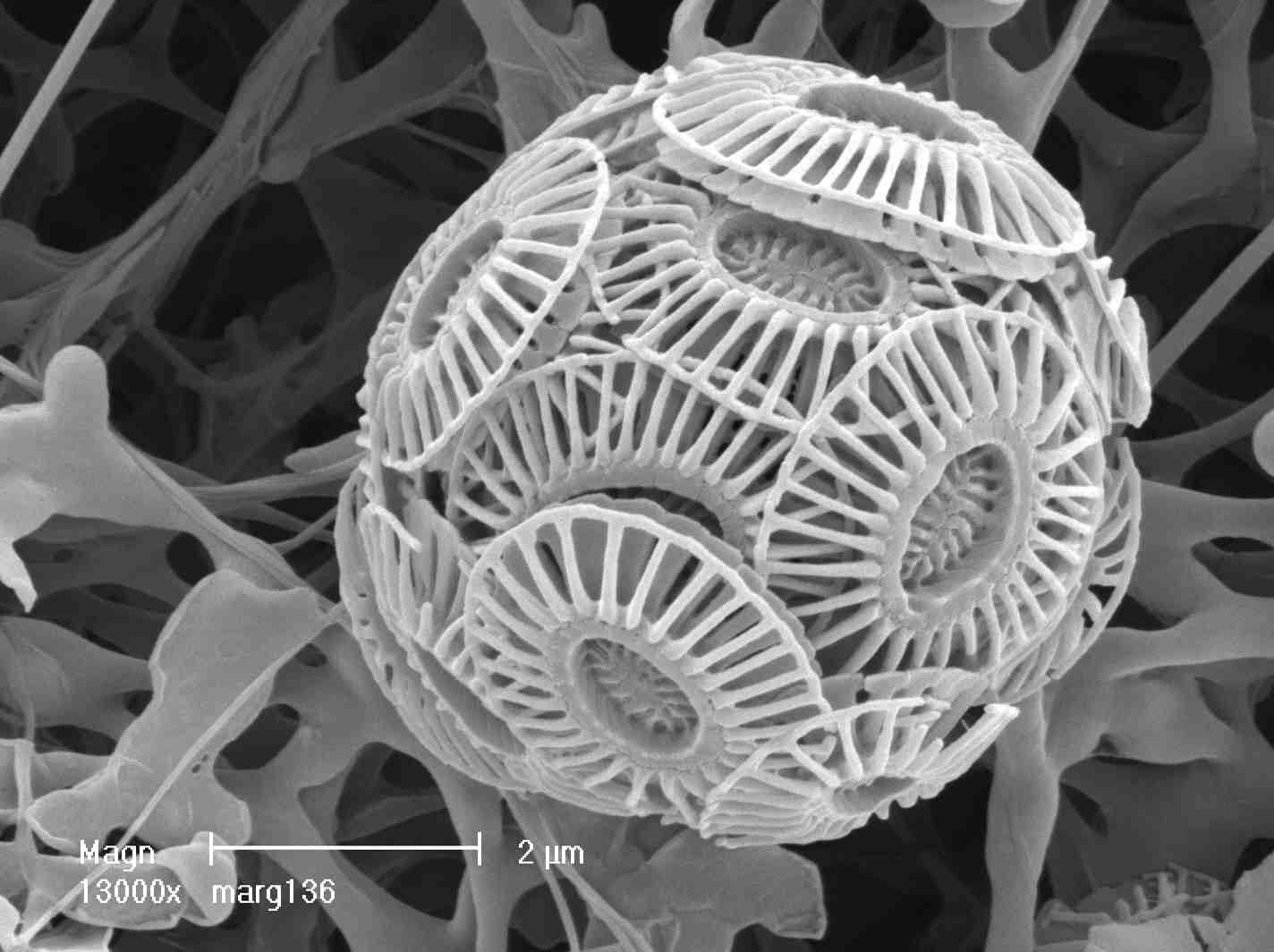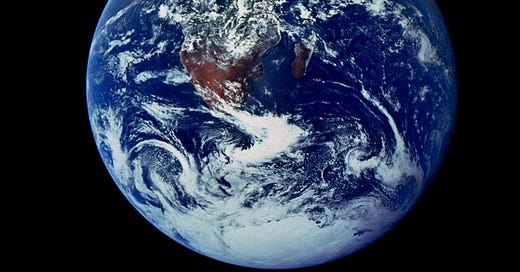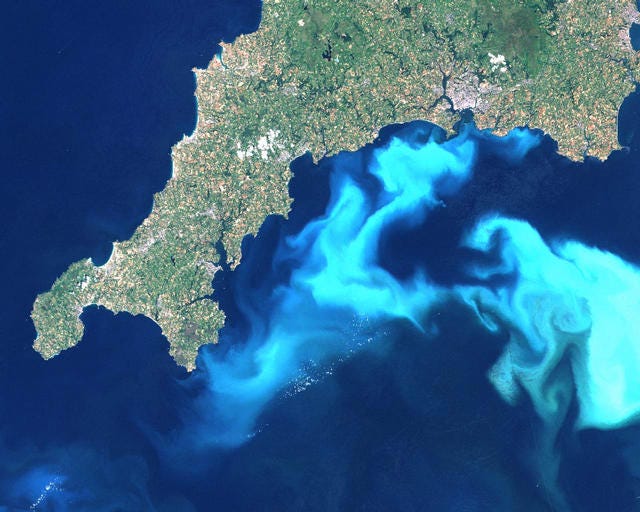Water Gaia is one of the four perspectives that guided Living Waters co-operative inquiries, alongside living cosmos panpsychism, biopoetics, and place-based ecology. In this post, Stephan Harding introduces Gaia theory and the significance of Water for the living Earth
It is often said that without water there would be no life, but how many of us realise that the opposite is also true: that without life there would be no water?
Our planet’s water is found mostly in the oceans but also in clouds and ice. This is in stark contrast with Mars where there are small quantities of water ice on the surface which is nevertheless a dry, barren desert utterly inhospitable for life. The surface of Venus, our other close neighbour in the solar system, is also utterly desiccated. There is evidence that both these planets had liquid water thousands of millions of years ago and that this disappeared for various reasons equally long ago. Although there may be ice on the Moon, our sister planet is also utterly barren and desiccated. The contrast between Mars, Venus and the Moon and our own deliciously moist planet couldn’t be starker. When we visualise Earth from space we see a beautiful jewel made blue and white thanks to her abundant water, which, according to a Gaian science perspective, has been kept on the planet over thousands of millions of years thanks to myriads of interaction amongst living beings and their ‘non-living’ surroundings. In essence, the idea is that, were it not for life, Earth would by now be as desiccated as Mars, Venus, and the Moon.
… were it not for life, Earth would by now be as desiccated as Mars, Venus, and the Moon.
Although Gaia theory is mainstream science, the original concept of Gaia comes to us from the ancient Greeks and probably from even further back. Hesiod in 700 BC wrote down the ancient myth of Gaia, as told in his times, in which Gaia was the first born of primordial Chaos. Gaia, the steadfast base of all things, gave birth to the heavens and eventually to all living beings and all the planet’s water, atmosphere and rocks. For the ancient Greeks and indeed for traditional cultures the world over, the whole cosmos including the earth is a great psyche, a great soul which in pre-scientific Europe was called the Anima Mundi, the Soul of the World. Our culture lost this essentially panspsychist perspective at least 400 years ago during the scientific revolution, a move that perhaps began some 2000 years earlier when the war-loving patriarchal worshipers of Yahweh, the Sky God, swept out from the Eurasian steppe to conquer the peaceful Mother Goddess cultures of Southern and Western Europe.
In our time the concept of Gaia has come back to us through the scientific work of James Lovelock whose first paper on Gaia as a self-regulating planetary system was published in 1972. Before Lovelock, scientists thought that the earth was no more than a ball of rock with a very thin smear of insignificant living beings on the surface contributing nothing of importance to regulating conditions on that same surface. This dead earth was conceived of as having two components. On the one hand, the biota, arranged into the five kingdoms of life: plants, animals, bacteria, protoctista (including amoeba and sea weeds), and the fungi, and on the other the so-called ‘nonliving’ or ‘abiotic’ environment of rocks, atmosphere and water.
In this pre-Gaian view the biota were no more than passive passengers forced to adapt to abiotic conditions such as the planetary temperature generated by volcanic emissions of carbon dioxide thanks to tectonic energies originating in the deep earth beneath our feet. The biota had to keep up with the changes in the abiotic domains or go extinct (Figure 1).

In contrast, Lovelock’s Gaia Theory proposes that the biota have huge influences on the rocks, atmosphere and water and that all four components are tightly coupled through complex feedbacks, giving rise to the emergent ability of the planet as an organism-like whole to regulate key aspects of its global surface such as temperature, distribution of key elements and acidity.
Thus, the biota are not in charge of the planet, but rather help create surface conditions in which they themselves have to survive (Figure 2). It is now accepted in mainstream science that the biota contribute to key Gaian self-regulating feedbacks by recycling gases such as carbon dioxide, oxygen, and water vapour and it is considered likely that in the process they have retained much of the planet’s water over geological time.

Take a look at Figure 3. The curve shows that the temperature of the planet from around 4543 million years ago until today has remained within the narrow limits tolerable by life despite the fact that the sun has been gradually brightening so that today it is about 25 to 30% brighter than it was 4543 million years ago. During this vast span of time volcanoes have been emitting carbon dioxide into the atmosphere.

The combination of these two factors – a brightening sun and the ongoing input of carbon dioxide to the atmosphere from volcanic activity is a recipe for global heating which eventually would have made the planet so hot that all the water would have evaporated and disappeared in a runaway greenhouse effect long ago, just as we think happened on Venus thousands of millions of years ago. The curve shows that planet Gaia has experienced colder and warmer periods, but despite these fluctuations, it has never been too hot or too cold for life. This is evidence for emergent system-wide Gaian regulation of planetary temperature just right for maintaining liquid water over geological time.
The water molecules that flow through you, that ever renew themselves in you and as you from planet Gaia’s rainfall, each one of them is composed of two hydrogen atoms linked to one atom of oxygen: H2O. The hydrogen and oxygen atoms love to be together and bond very closely with each other. But if for some reason the hydrogen atoms in water molecules are freed from their oxygen partners, then the planet dries out because free hydrogen atoms are so light that earth’s gravity can’t hold them down, so they drift up out of the atmosphere and are lost to space. No hydrogen, no water.
… if for some reason the hydrogen atoms in water molecules are freed from their oxygen partners, then the planet dries out because free hydrogen atoms are so light that earth’s gravity can’t hold them down, so they drift up out of the atmosphere and are lost to space.
There are many ways in which hydrogen atoms are released from water molecules. Abundant basalt rocks at the bottom of the oceans in the presence of carbon dioxide dissolved from the atmosphere strip oxygen atoms from sea water, liberating free hydrogen. This chemical process has been going on for around 4000 million years ever since the basalt crust of the planet was covered by the first global ocean, long before continents of any size existed. So ever since those times we have been losing water through the escape of hydrogen.
I like to think of hydrogen as the teenager of the chemical world. Given half a chance it leaves its planetary home with hordes of other hydrogen teenagers seeking adventures in the wider world of outer space where they often ‘hang out’ in great clouds of hydrogen gas, some of which coalesce and ignite into stars in which the heavy elements are sometimes created.
Another route by which hydrogen escapes to space is entirely biological: certain kinds of bacteria ferment dead bodies with water, liberating carbon dioxide and free hydrogen as their waste products. Had other kinds of bacteria not recaptured the fleeing hydrogen, the planet might well have entirely dried out, perhaps around 2000 million years ago.
Life captures escaping hydrogen in various other ways. Certain bacteria living in underwater sediments combine escaping hydrogen with dissolved carbon dioxide to build their bodies. In the process they create newly minted water molecules which have captured the fleeing hydrogen. Another way which has been happening for the last 2500 million years or so is due to a kind of photosynthesis that produces oxygen as waste product. These photosynthetic beings (plants, photosynthetic bacteria and algae) use the energy of the sun to split water. The oxygen they release captures the fleeing hydrogen and reconstitutes water.
Life captures escaping hydrogen
There’s a ‘cold trap’ some 12 kilometres above sea level. Any water that reaches there freezes out before it can be split into hydrogen and oxygen by the intense ultraviolet light at those altitudes. If it weren't for life, there wouldn't be a cold trap. Living beings contribute in various ways to planet Gaia’s emergent ability to regulate her temperature within the narrow limits that allows the cold trap to exist. Enhanced chemical weathering by plants, fungi, lichens and bacteria living on and in certain kinds of rock such as granite removes carbon dioxide from the atmosphere. This has helped to keep planet Gaia cool enough for a cold trap to exist at the top of her atmosphere.
Clouds seeded by forests also help to cool planet Gaia thanks to their dense white upper surfaces which reflect the sun’s energy back to space. Microscopic single-celled photosynthetic algae living at the surface of the world’s oceans such as the coccolithophores also seed planet-cooling clouds (Figure 4).

Sometimes trillions of coccolithophore cells bloom at the same time, staining the ocean white thanks to their tiny chalky shells (Figure 5). These blooms can be so huge that they are visible from space. The blooming coccolithophores release a gas known as dimethyl sulphide (DMS) which seeds clouds.
A simple feedback involving these algae seems to contribute regulating our planet’s temperature (Figure 6). More coccolithophore blooms in the ocean seed more clouds, which means that the sea surface temperature drops. The new lower surface temperature is doesn’t favour the coccolithophores, so fewer clouds are seeded, which allows the sun to beat down on the dark ocean surface and increase its temperature. Now the coccolithophores thrive in the warmer ocean surface and so produce more clouds which cools the surface ocean again.

The Amazon rainforest, where it rains a great deal, also seeds planet cooling clouds. The trees and the vegetation capture some of this water in their roots and send it back through their leaves into the atmosphere. The sun evaporates the water in rivers and on leaf surfaces and this water also goes off into the atmosphere above the rainforest. The atmosphere above the rainforest is saturated with water vapour which wants to condense into clouds, but this happens only when rainforest plants release cloud seeding molecules in vast quantities from their leaves into the air. Trillions and trillions of these molecules made by plants go off into the atmosphere above the forest where they seed clouds which drop rain onto the forest, thereby cooling the region and the planet whilst keeping the forest’s water cycle going.
Heat is released when water vapour condenses into clouds. The heat makes the cloud rise which creates updrafts of air which may well carry bacteria from the forest into the very clouds themselves. Amazingly, it seems that these bacteria can decide when they want it to rain by extruding ice onto their surfaces which promotes the freezing of the water. The ice particles with their bacterial passengers fall out of the cloud and turn into rain as they approach the forest. It seems likely that bacteria disperse form one part of the forest to another in this way. The wider implication of this bacterial behaviour is the maintenance of the water cycle.
But much of the Amazon forest lives very far from the Atlantic Ocean, which is its principal source of the forest’s water. So how does water get all the way from the Atlantic into the very centre of the Amazon and then even further west to the mountainous spine of the Andes? The answer could well be what some scientists call the ‘biotic pump’. It seems that when water vapour condenses into clouds thanks to the cloud seeding molecules released by the forest, the air pressure above the forest drops since there are now fewer molecules of gaseous water in the air. It is possible that this drop in air pressure over the Amazon is so huge that moist high-pressure air from the Atlantic Ocean rushes in to fill in the partial vacuum created when the forest seeds clouds. The water cycles six or seven times all the way along Amazon towards the west until it meets the Andes which condense the clouds into rain that falls onto the Amazon forest, restoring water to its great rivers and eventually reaching the ocean. This completes an important part of planet Gaia’s immense water cycle. The same sort of thing could be happening above planet Gaia’s other rainforests, such as those of the Congo basin and Asia.
Ponder how our planet’s ocean water has its own planet-wide circulation which takes 1000 years to complete its tour around the world as it flows from the surface into the deep ocean and back to the surface again. All the water flowing through you will be mixed into this ocean circulation sooner or later.
So now, may I suggest that you try developing a sense of connection with Gaia by contemplating what you’ve learned here in your own special ‘Water Gaia Place’. Spend time with a stream, a river, a pond, a marsh or the ocean. Meditate on how living beings have helped to keep the planet moist during immense spans of geological time in ways described here. Retaining and recycling water, reforming and releasing it, this truly is a vital aspect of Gaia’s planetary alchemy.
With the help of this science of the living earth you could fall in love with Gaia. As you hear the water, paddle in the water, swim in the water, you become Gaia’s living water.
Further Reading
For a fuller description of Gaia theory go to
Harding, S. P. (2009). Animate Earth. Foxhole, Dartington: Green Books.
Lovelock, J. E. (1979). Gaia: A new look at life on earth. London: Oxford University Press.
Video: Deep Ecology and the Healing of the Earth
For more on Water Gaia
Harding, S. P., & Margulis, L. (2010). Water Gaia: 3.5 thousand million years of wetness on planet Earth. In E. Crist & H. B. Rinker (Eds.), Gaia in Turmoil: Climate change, biodepletion, and earth ethics in an age of crisis (pp. 41-59). Cambridge, MA: The MIT Press.
For Stephan’s more recent explorations of Gaia as alchemy
Harding, S. P. (2022). Gaia Alchemy: The reuniting of science, psyche, and soul. Rochester VT: Bear & Company.




